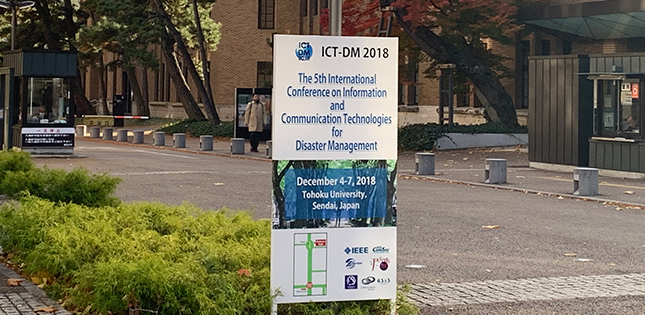The 5th International Conference on Information and Communication Technologies for Disaster Management (ICT-DM) was held in Sendai last December 4 - 7, the first time the event was ever held in Asia.
Tohoku University, with its strong disaster science programmes and first-hand knowledge of the role ICT played in the relief efforts following the 2011 Great East Japan Earthquake, was well placed to host it.
"The ICT-DM is always a great opportunity for researchers and practitioners from different fields to meet, share ideas and discuss the latest trends," said Professor Hideaki Sone, of Tohoku University's Cyberscience Center, who was one of the event's organisers. "Many Asian cities have experienced severe natural disasters recently - typhoons, floods, earthquakes, tsunami - so I think it's significant that the conference came to Asia this time, to allow more researchers from this region to attend."
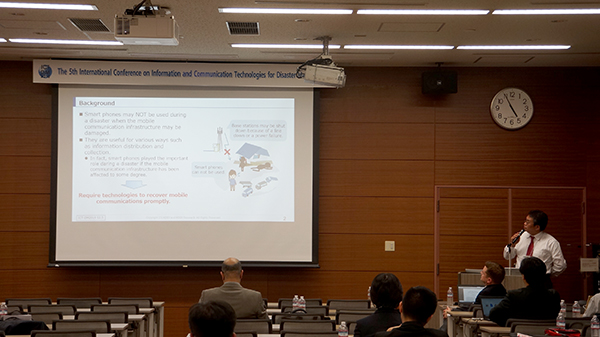
Giving the opening keynote address was Professor Guoliang Xue from Arizona State University. He spoke of the role that social media has played in the sharing of information in the immediate aftermath of disasters and the need to maintain a working communication network in tough environments.
"Social media is the application, but underneath all that, we need to have an underlying wireless network that works so that messages can be sent. Disasters tend to be when a network is at its most vulnerable, so we are studying ways to increase its toughness against failures, and if there is a failure, ways to reconnect the working pieces of the network with limited relay nodes."
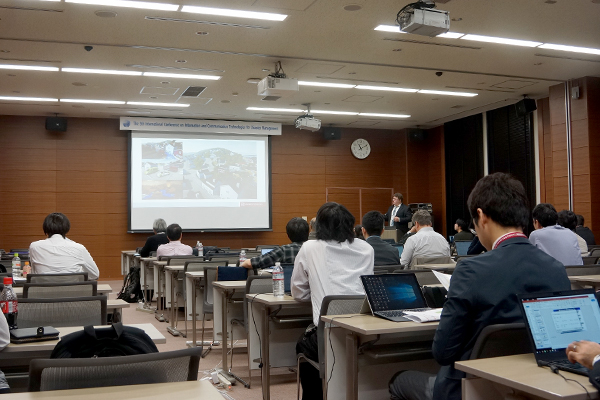

The need for proactive solutions was also a major theme of the conference. Speaking about lessons learnt from the 2011 Great East Japan Earthquake, Professor Hiroaki Kobayashi, from Tohoku University's Graduate School of Information Sciences, said that effective tsunami forecasting systems are urgently needed worldwide.
"To that end, we have developed a real-time tsunami inundation forecast system that can complete a tsunami inundation and damage estimation for coastal cities, at the level of a 10-meter grid size in less than ten minutes."
Kobayashi also introduced the various activities of the Cyberscience Center, such as the operation of the supercomputer systems, which is one of the cyber infrastructures for Japan's academic sciences and engineering communities.
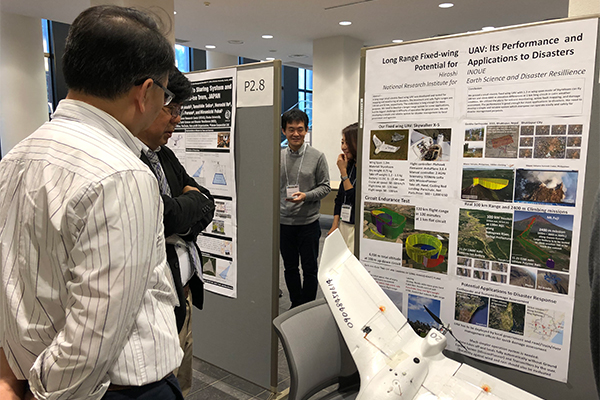

Aside from the lectures and workshops, there were two poster sessions presented by researchers and disaster volunteers. "What I saw by the young researchers was really, really impressive," said conference co-organiser Professor Soufiene Djahel of Manchester Metropolitan University.
He added that the lively Q&A sessions that followed each lecture also produced many insightful ideas. "At each session, the questions move the research forward and pave the way for collaboration. We ask questions based on our background and our expertise, our understanding of things. And our questions can raise suggestions to improve the work, to extend it or widen the application to other scenarios."
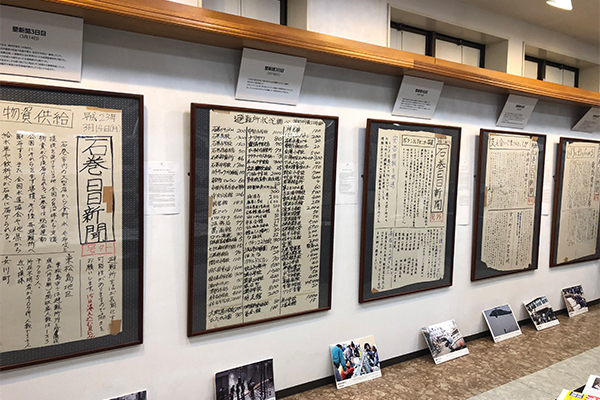
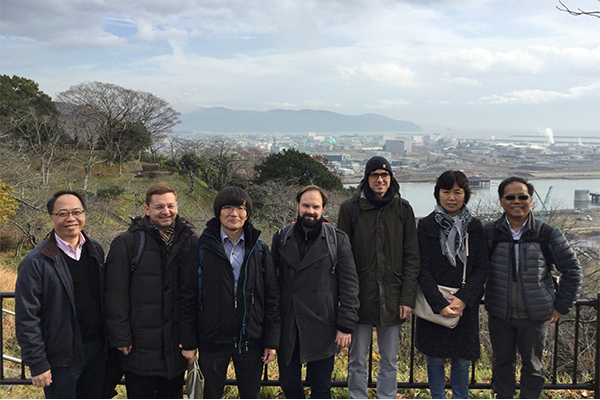
The conference ended with field trips to coastal towns in Miyagi that were badly affected by the 2011 earthquake and tsunami. While there has been great progress in the recovery efforts, the impact of the disaster can still be seen and felt in places like Ishinomaki and Yamamoto.
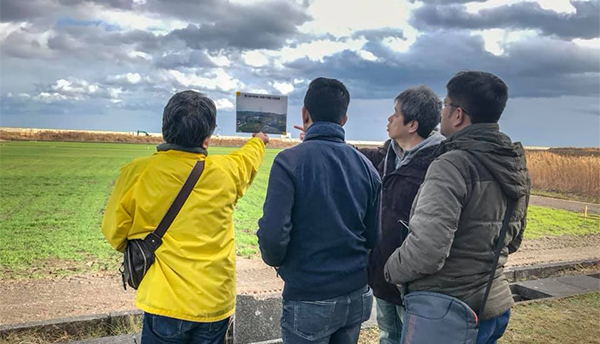
"Some of the participants who went on the field trip were shocked by what they saw and very moved by the stories they heard from the local residents," said Sone, who added that the participants spent a long time looking at the exhibits and digesting the information on the maps and photos chronicling the events of March 2011.
"I think being there helped them truly understand the magnitude of the devastation and the urgent need for global disaster management solutions."
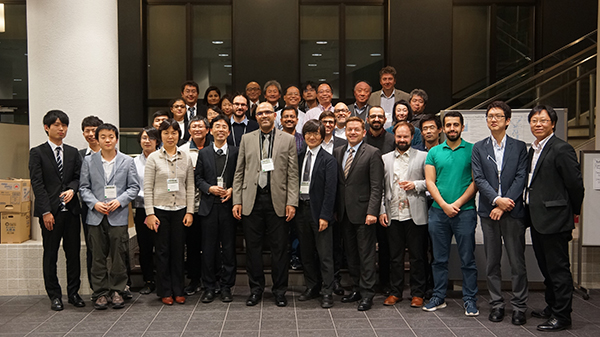
Contact:
Professor Hideaki SoneTohoku University Cyberscience Center
Email: sone
 cc.tohoku.ac.jp
cc.tohoku.ac.jp
